Suffering a termite attack can be an emotional and expensive experience. Although many would view a termite infestation as just bad luck, there will actually be a good reason why termites have chosen and found a way into your...
Suffering a termite attack can be an emotional and expensive experience. Although many would view a termite infestation as just bad luck, there will actually be a good reason why termites have chosen and found a way into your house. For termites to find your house attractive, there must be an area of soil around or under your house that is moist – termites love moisture! Once they have found your house, they have got to find their way in. Here we look at the common termite entry points we find when we do our termite inspections.
Termite entry points outside the house
Termites can squeeze through a gap as small as 2mm, so any cracks in mortar are a potential entry point. As such, the perimeter walls of the building, especially for homes on concrete slabs need to be visible so a termite inspector can make sure termites are not gaining access.
For homes built on a concrete slab, the exposed edge of the concrete slab provides a physical barrier and good inspection zone. However, many homeowners think it’s ugly, so they build over the edge of the concrete slab. When builders, homeowners and landscapers build garden beds, paths, decks and other structures that cover these lower parts of the perimeter wall, it allows termites to get into the building unnoticed.
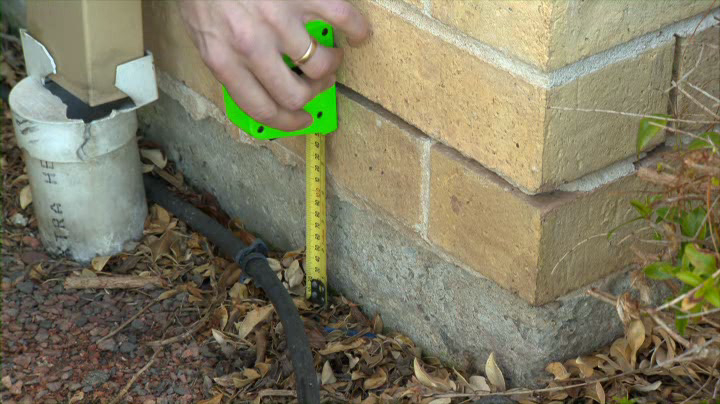 Concrete slab edge visible
Concrete slab edge visible
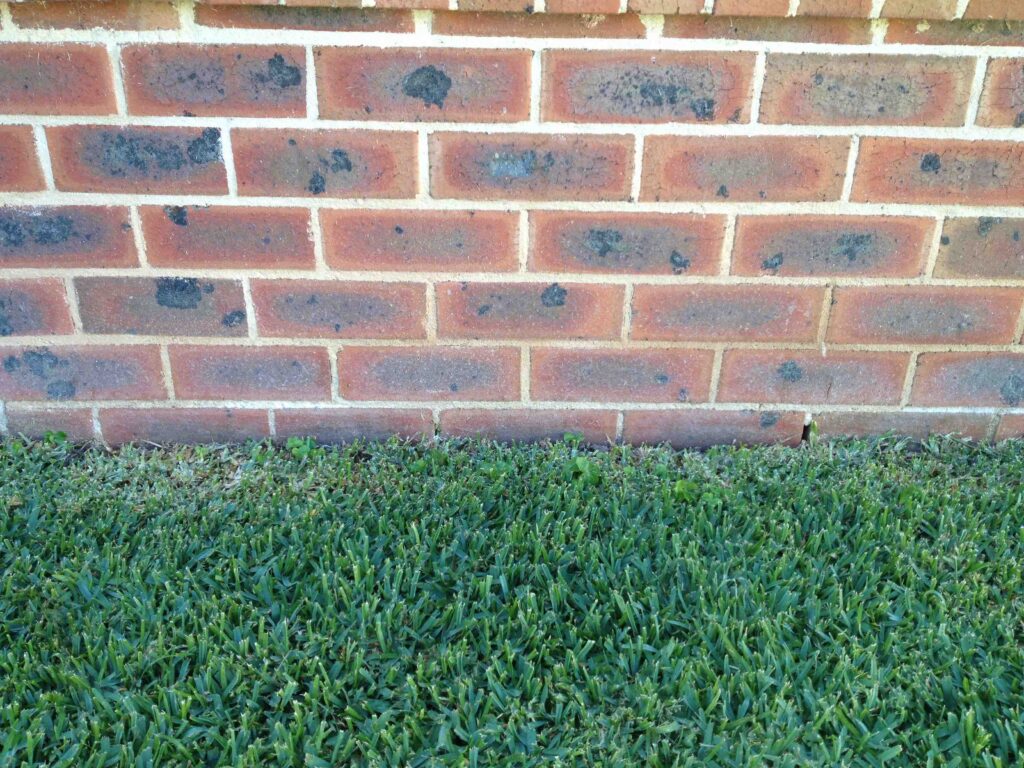 Concrete slab edge and weepholes covered by lawn allowing termites to enter unnoticed
Concrete slab edge and weepholes covered by lawn allowing termites to enter unnoticed
Soil level / path built over the end of the concrete slab and lower levels of the perimeter wall, without suitable termite protection in place, will provide termites with concealed termite entry points.
Termites could gain access through:
Cracks in brick mortar Cracks between the concrete slab Through weepholes and ventsTermite access through supporting structures
Termites are capable of chewing up through vertical timber supports that are in direct contact with the ground, without being noticed. If these structures are connected to the main building, then the termites can gain access to the house. Using metal supports doesn’t always avert a termite problem. Some metal supporting poles are hollow and termites are quite capable of travelling up the inside to gain access to the building. When decks and verandas are built abutting a building, it is important that they are protected and allow for inspection underneath, otherwise termites can travel underneath the deck unnoticed to access the house.
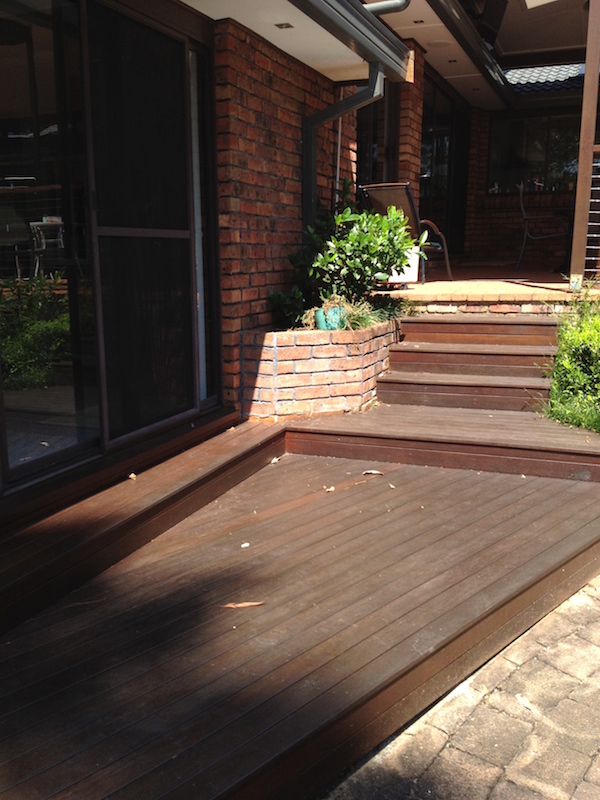 Decks concealed the building edge allow termite to enter unnoticed
Decks concealed the building edge allow termite to enter unnoticed
Termites could gain access through:
Timber supports in direct contact with ground Hollow metal supports Decks and verandas which are not themselves protected and do not allow for inspectionTermite access under the house
There are lots of potential termite entry points underneath houses. For homes built on piers, termite activity can generally be spotted during a termite inspection. For homes built on concrete slabs, termite activity is generally not spotted until it’s inside the house!
For homes on piers termites can build their mud tubes over the outside of the supporting piers and sub-floor walls. They can even build over the metal “ant capping”. This is actually the construction elements doing their jobs – the termite activity is visible rather than concealed. Termites can also travel up inside the brick piers and walls. If there is a suitable physical barrier at the top of the pier / wall, before the floor timbers (as there should be), the termites will be stopped. The problem arises when these physical barriers are not in place or are damaged.
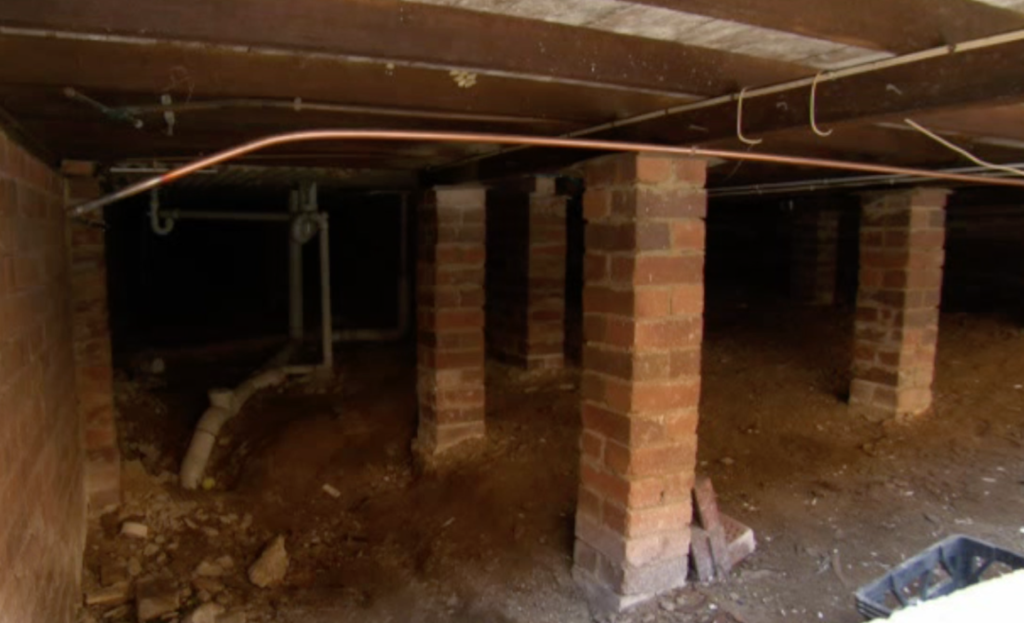 Brick piers with metal ‘ant’ caps in place to prevent concealed termite entry
Brick piers with metal ‘ant’ caps in place to prevent concealed termite entry
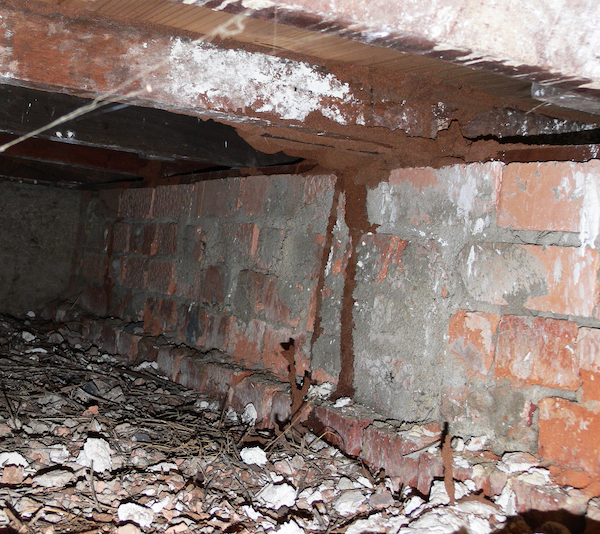 Termites accessing sub-floor timbers (no protection in place)
Termites accessing sub-floor timbers (no protection in place)
For houses on concrete slabs, termites can access through any crack in the slab. As these cracks also often allow moisture from inside the house to escape, it means you have moisture (which termites love) right next to an entry point. Bad news!
Termites could gain access through:
Cracks in concrete slabs Joins between concrete slabs which haven’t been protected properly Gaps around utility entry / exit points (drains, water pipes, electrical conduit)Another common termite entry point is under entrance steps to the front or rear of the building. These are often built in with no access and no termite protection, allowing termites to access the house without being noticed.
With sneaky termites finding lots of potential entry points, it’s easy to see the value in annual professional termite inspections. If it’s been a while, please contact Rebel Pest Professional to book your next inspection to help protect your property from termites.


